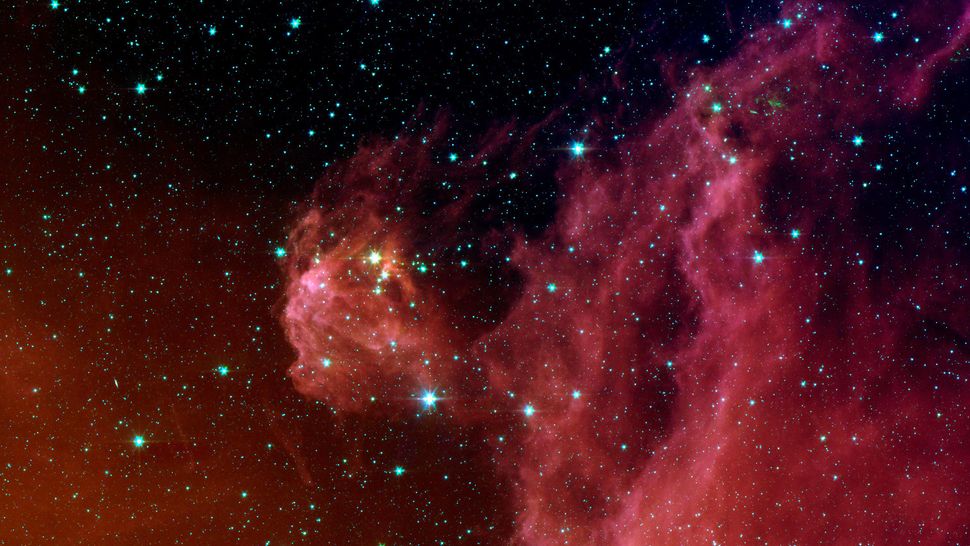Science
Related: About this forumSome stars may be 'infected' with black holes that destroy them from within, new study hints
Some stars may be 'infected' with black holes that destroy them from within, new study hints
By Jonathan Gilbert published 14 hours ago
Could dark matter be made of mini black holes that formed in the early universe? One way to find out is to look for missing stars, destroyed by primordial black holes, a new study suggests.

Young stars blaze to life in the Orion Nebula. New research suggests that still-forming stars like these may become ‘infected’ with ancient black holes, leading to their destruction. (Image credit: NASA/JPL-Caltech)
A sizable portion of the universe's matter could be made of microscopic black holes from the dawn of time — and they may be devouring stars from the inside out, a new study suggests.
The research looks to solve the mystery of dark matter, an elusive entity thought to make up 85% of the universe's mass, but which does not interact with light and is effectively invisible. While the nature of this elusive dark matter remains a puzzle, there's no shortage of ideas. One intriguing suggestion is that it is made up of primordial black holes (PBHs). In a new study published in the Monthly Notices of the Royal Astronomical Society, scientists investigated the effect of PBHs when they are caught up in forming stars.
Many black holes form when massive stars die. In the aftermath of supernova explosions, matter is packed so tightly that its gravity overcomes the outward force of the blast, sometimes causing the former star's core to collapse into a black hole. During the 1960s scientists realized that black holes could also form directly from extremely compact regions of matter in the first few seconds after the Big Bang. These primordial black holes could range from the mass of a dust particle up to thousands of times the mass of our sun. While there are many unanswered questions around PBHs, scientists believe they could make up a portion of the missing mass in the universe.
The first detection of gravitational waves by the Laser Interferometer Gravitational-Wave Observatory and its counterpart, the Virgo interferometer created new possibilities for studying these primordial black holes, lead study author Nicolas Esser, a theoretical physicist at the Université Libre de Bruxelles, told Live Science in an email.
More:
https://www.livescience.com/space/black-holes/some-stars-may-be-infected-with-black-holes-that-destroy-them-from-within-new-study-hints
Permanut
(7,865 posts)You bring us a new marvel with every post, and with each one is another reminder that we lost Carl Sagan too soon. He would have loved this.